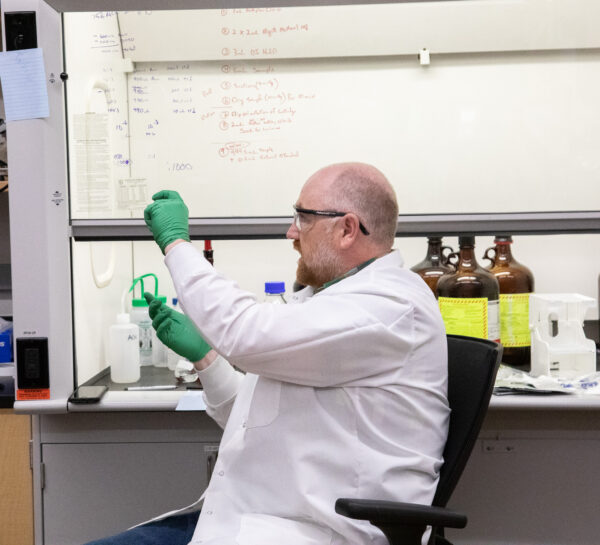Bingham Research Center works to improve Utah’s climate
The USU Bingham Research Center employs both professional scientists and students to help in their environmental work.
The facility is 70,000 square feet and has been open since 2010. Its staff is dedicated to studying air quality, energy and the environment.
Seth Lyman, the director of the team, has worked for USU and the center for 12 years. He is also a research professor in the Department of Chemistry and Biochemistry at USU.
“My research focuses on atmospheric measurements, atmospheric instrumentation, measurements of pollution that is emitted from a source and the kind of chemistry in the atmosphere,” Lyman said.
Lyman and his team also work with students at the center and do what he calls “outreach work” to help their mission.
“We work a lot with industry and regulatory agencies and environmental groups to make sure that the research that we do helps solve problems,” Lyman said.
Utah’s climate sees a lot of unique issues, specifically in air quality. In 2023, a State of the Air report was released by the American Lung Association. This report shows ozone rates, pollution levels and air quality levels throughout different states.
“Salt Lake City ranks 10th in the U.S. for worst ozone pollution, and 19th for worst short-term particle pollution,” the report said. “Logan ranks 17th worst short-term particle pollution.”
Lyman is aware of the specific problems surrounding the state.
“Utah is such a unique place because we have a lot of mountain valleys and basins surrounded by mountains,” Lyman said. “We also tend to have some pretty low winds in the winter. Air quality is going to continue to be a Utah problem for a long time to come.”
The center has goals they strive for to create work that has a real-world application.
“The biggest part of our research is studying air quality issues that are unique to this region, in the Uinta Basin, around Vernal,” Lyman said. “The chemicals emitted from those pollution sources are different and so it ends up that we have high ozone in the wintertime, which is unusual. Ozone usually occurs in urban areas in the summer.”
John Lawson, a senior air quality scientist, works with Lyman and the research center. His role is to improve weather predictions for Utah weather, and he works with high-ozone pollution episodes.
Though relatively new to the center, Lawson has already started important projects.
“I’ve looked at how ChatGPT performs when applied to weather problems, like predicting thunderstorms or pretending to be a student answering an exam,” Lawson said. “I am also creating an artificial intelligence model that combines weather forecasts, like snowfall and high-pressure values, with a set of rules that predict whether that weather will lead to a pollution episode.”
The geographical setting of the state is a part of what makes the ozone a unique issue.

“Other countries are from a stratosphere where ozone is good, and we’re at high elevation, and so stratospheric sources, where we also are in an area without the wildfires, which leads me to ozone,” Lyman said. “There’s a lot of cards stacked against it.”
A seemingly never-ending issue with Utah’s climate is the need for more water. Coming off a record-breaking winter was positive for Utah in many ways, but did not solve its problems.
“Where we have high ozone winter, it’s maybe getting better, but it’s so episodic that it’s hard to know yet. We have had a lot of good years and then this past winter, 2023 was just really, really ugly,” Lyman said. “Air quality has been beautiful all winter long, and even a basin so far, but we also haven’t had much snow out here.”
Colleen Jones, a lead researcher for the center, has been involved with USU since 2014.
“I participate in a wide variety of projects from air, soil and water quality issues in the Uinta Basin,” Jones said.
According to Jones, the work performed at the research center is essential.
“I believe what I do is an important part of solving complex environmental issues, as well as ensuring that my community has accurate information about the environment to make informed decisions that will impact future generations,” Jones said.
The staff members have a passion for their work, which carries into training and mentoring students as well.
“We hire students from Statewide Campuses and especially the new Innovation Campus than elsewhere, but we do have students in Logan that work with us,” Lyman said.

